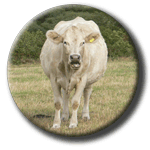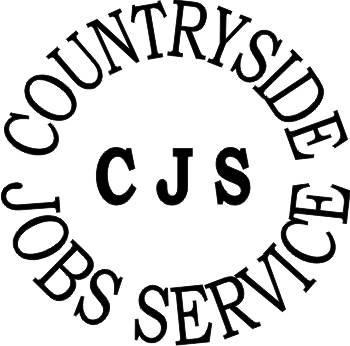Naturenet: Intimidation and other problems
Intimidation and other problems
Sometimes landowners do things to persuade people not to use rights of way.
Sometimes these are illegal. If you encounter these problems speak to your local
rights of way office.
If any animal causes unreasonable interference with the use of a right of way it may constitute a nuisance under common law. Local authorities have a duty to deal with nuisances reported to them by serving an abatement notice on the person who is responsible. Failure to comply with the notice results in an offence being committed and the person can then be fined. But this rarely happens as it can take a long time, and might not get the path safe to use very quickly. Right of way officers are more likely to start by trying to negotiate a solution to any problem.
 If there's a bull in a field, watch out. In fact, if there's any animal in
a field, be careful, as even common cattle can cause serious injury or death
if they get going. Dogs, especially, can be problematic, so take care when
near farm animals with your dog or without. However, the law also has a few
things to say about animals in such situations, and this page will explain
some of them.
If there's a bull in a field, watch out. In fact, if there's any animal in
a field, be careful, as even common cattle can cause serious injury or death
if they get going. Dogs, especially, can be problematic, so take care when
near farm animals with your dog or without. However, the law also has a few
things to say about animals in such situations, and this page will explain
some of them.
Section 59 of the Wildlife & Countryside Act 1981 bans the keeping of bulls in fields crossed by a right of way, except if they are:
- under the age of 10 months; or
- not of a recognised dairy breed, provided that they are accompanied by cows or heifers.
Recognised dairy cattle are currently defined as Ayrshire, British Friesian, British Holstein,
Dairy Shorthorn, Guernsey, Jersey and Kerry.
In practice, it may be difficult for a user to know whether
bulls will be likely to be dangerous or not, and farmers are asked, wherever
possible, not to keep any bulls in fields crossed by rights of way. Sometimes,
temporary electric fencing (suitably insulated at public crossing points)
can segregate the public from the bulls. Such fencing would normally require
authorisation from the local Highway Authority.
Advice from the Ramblers
The Ramblers' Association provides the following helpful advice to walkers. It is worth emphasising that the majority of attacks occur when dogs are present or cows are acting in defence of their calves:
- Be prepared for cattle to react, and, where possible, walk carefully and quietly around them - do not split up a clustered group.
- If you have a dog with you, keep it under close control, but do not hang on to it should a bull or cow start acting aggressively.
- Cattle will usually stop before reaching you. If they do not, just carry on quietly, and do not run.
- Should a bull or cow come up very closely, turn round to face it. If necessary take a couple of steps towards it, waving your arms and shouting firmly.
- Above all, do not put yourself at risk. If you feel threatened, find another way round, returning to the original path as soon as is possible.
- Remember to close gates behind you when walking through fields containing livestock.
- If you are attacked or suffer a frightening incident, report this to the landowner and the highway authority, and also the HSE and police if it is of a serious nature.
A landowner may not erect misleading signs likely to deter people from using a right of way. For example, a sign 'Private Road' placed on a track which is also a byway would be a misleading sign. A sign 'Bull in field' when there was not a bull in the field could also be misleading. This is a fineable offence under section 57 of the National Parks & Access to the Countryside Act 1949, and the highway authority can initiate prosecutions in the magistrates’ court.
A landowner may not prevent the public from using a right of way by telling
them to leave, threatening them, keeping a fierce dog having access on to
land crossed by a right of way, or by any other form of intimidation or harassment.
 A barbed wire or electric fence or exposed barbed wire erected across a public
right of way without an adequate means of crossing is an offence under the
Highways Act 1980. If the fence is necessary for agriculture a suitable crossing
point for path users must be provided, this will require authorisation from
the local Highway Authority.
A barbed wire or electric fence or exposed barbed wire erected across a public
right of way without an adequate means of crossing is an offence under the
Highways Act 1980. If the fence is necessary for agriculture a suitable crossing
point for path users must be provided, this will require authorisation from
the local Highway Authority.
Where a barbed wire or electric fence is situated alongside a right of way
it may be a danger or nuisance to path users. It is not illegal to put barbed
wire alongside a path but most local highway authorities have a policy on how
they expect landowners to use barbed wire alongside rights of way. if you think
that barbed wire is close enough to a right of way to be a nuisance you should
tell your local rights of way office and see if they agree.
See also

 If there's a bull in a field, watch out. In fact, if there's any animal in
a field, be careful, as even common cattle can cause serious injury or death
if they get going. Dogs, especially, can be problematic, so take care when
near farm animals with your dog or without. However, the law also has a few
things to say about animals in such situations, and this page will explain
some of them.
If there's a bull in a field, watch out. In fact, if there's any animal in
a field, be careful, as even common cattle can cause serious injury or death
if they get going. Dogs, especially, can be problematic, so take care when
near farm animals with your dog or without. However, the law also has a few
things to say about animals in such situations, and this page will explain
some of them.  A barbed wire or electric fence or exposed barbed wire erected across a public
right of way without an adequate means of crossing is an offence under the
Highways Act 1980. If the fence is necessary for agriculture a suitable crossing
point for path users must be provided, this will require authorisation from
the local Highway Authority.
A barbed wire or electric fence or exposed barbed wire erected across a public
right of way without an adequate means of crossing is an offence under the
Highways Act 1980. If the fence is necessary for agriculture a suitable crossing
point for path users must be provided, this will require authorisation from
the local Highway Authority.